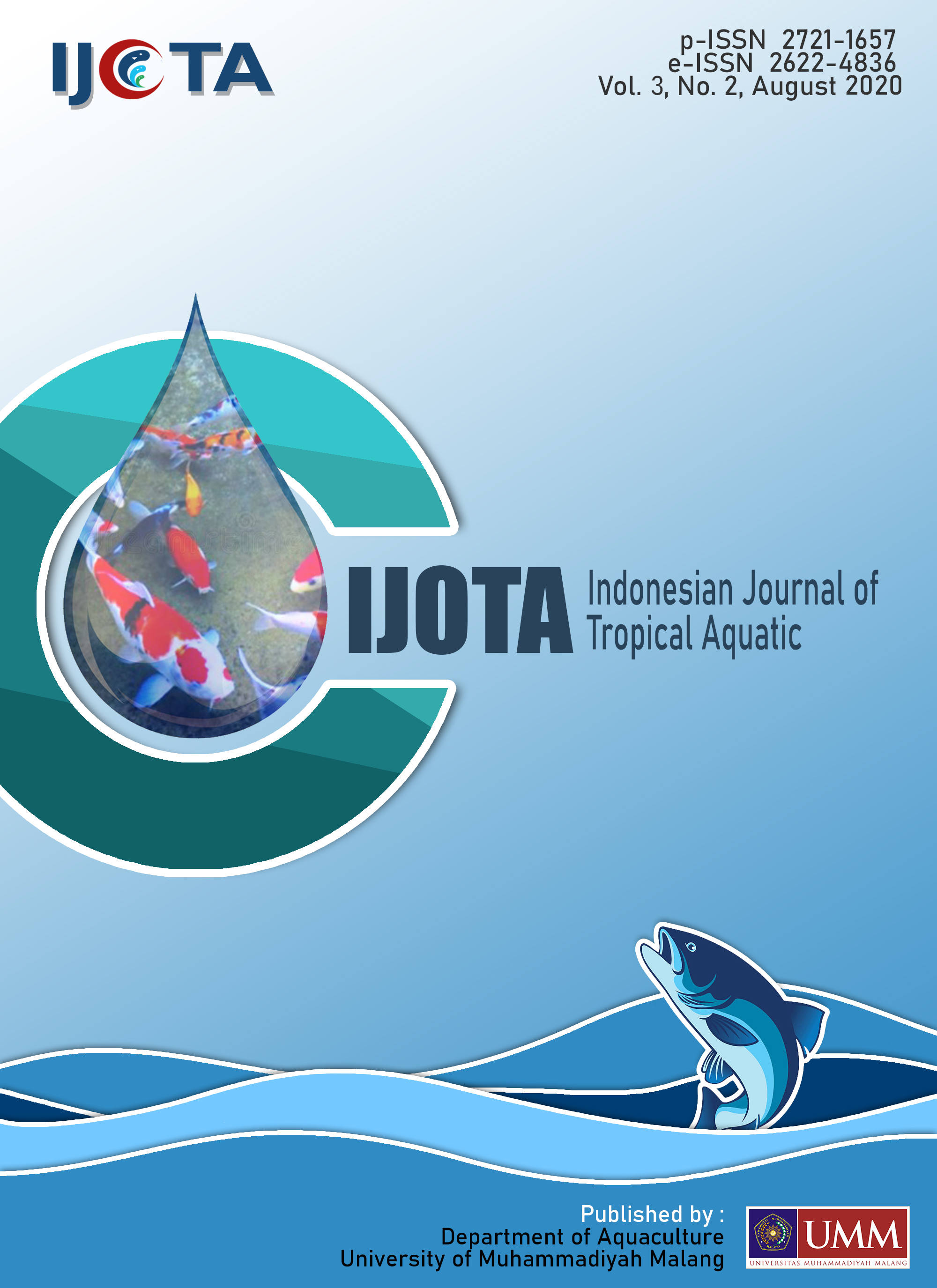About the Journal
| Journal title | : IJOTA (Indonesian Journal of Tropical Aquatic) |  |
| Initials | : IJOTA | |
| Grade | : Sinta 5 The decree B/1796/E5.2/KI.02.00/2020 | |
| Frequency | : Two issues per year (February and August) | |
| DOI | : Prefix 10.22219 by Crossref |
|
| ISSN | : Print 2721-1657; online 2622-4836 | |
| Publisher | : Universitas Muhammadiyah Malang | |
| Editor-in-chief | : Hany Handajani | |
| Managing Editor | : Dony Prasetyo | |
| Cite Analysis | : Google Scholar | |
| Indexing | : SINTA | Google Scholar | BASE | Crossref | Scilit | Garuda |
The IJOTA (Indonesian Journal of Tropical Aquatic) has been accredited by the National Journal Accreditation (ARJUNA) Managed by the Ministry of Research, Technology, and Higher Education, Republic Indonesia with Fifth Grade (Sinta 5) since the year 2020 according to the decree B/1796/E5.2/KI.02.00/2020.
The IJOTA (Indonesian Journal of Tropical Aquatic) is a peer-reviewed journal that is published twice a year (February and August). IJOTA is a scientific journal that discusses the results of research in science, technology, marine, and freshwater fisheries that have not been published. This journal only accepts articles from original research results (top priority), case study articles (not priorities), and scientific review articles that are new (not preference). Scopes this journal are research on Aquaculture (Fish Nutrition, Fish Health and Diseases, Water Quality, Fish Genetics Improvement and Breeding, Fisheries Engineering and Biotechnology), Aquarium Sciences, Aquatic Ecology (Marine, Brackish, Freshwater), Conservation of Aquatic Resources and also Coastal Management.
This journal is published by the Department of Aquaculture, Faculty Agriculture and Animal Science, University of Muhammadiyah Malang. The IJOTA (Indonesian Journal of Tropical Aquatic) is a Fisheries Journal first published in August 2018.










